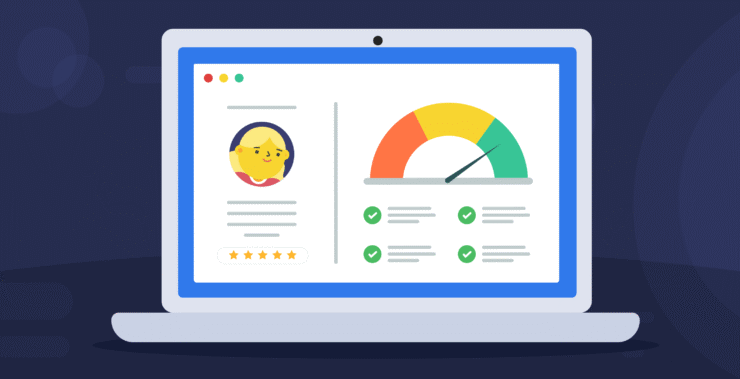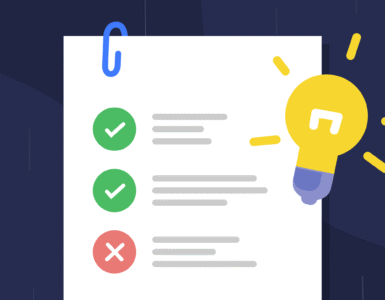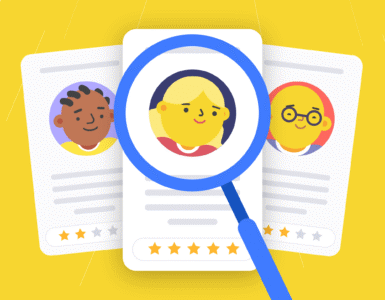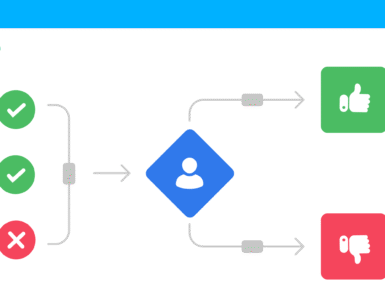The idea of measuring one’s potential by something other than talk isn’t new. Over 2,000 years ago, imperial China used standardized tests to select civil servants. These early tests measured knowledge of Confucian classics, poetry, and policy, not much different from today’s hiring test-for-measure tests that attempt to uncover potential behind a carefully crafted resume.
Flash forward to today, and pre-employment screening software is an art. Algorithms now determine everything from personality to the speed at which a person can complete logic problems. These pre-employment tests aren’t right or wrong answers — they’re how individuals think, behave, and respond to obstacles.
Employment testing tests assess skills, temperament, problem-solving ability, and even cultural fit. And yet, there are questions: Can we trust what they say? What really motivates the results? And where are hiring tests headed next?
From then to now: a brief history of hiring tests
To understand where we’re going, it helps to know where we’ve been. The journey from ancient assessment methods to today’s cutting-edge pre-employment tests is a fascinating one. In the early 20th century, the first standardized tests began to shape the way companies viewed potential employees. The Army Alpha and Beta tests of 1917 were designed to evaluate recruits’ cognitive abilities and match them to suitable roles. This was the beginning of using testing as a core tool in the hiring process.
Across the decades, personality tests like the Minnesota Multiphasic Personality Inventory (MMPI) became routine in the hiring process, with the focus on identifying the traits that would measure job success. Concurrently, cognitive tests came into favor as IBM and General Electric, among other firms, started utilizing them to gauge critical thinking, problem-solving, and adaptability.
These turning points in history have contributed to the development of the basis of pre-hiring screening software today. With modern business, there are numerous types of hiring tests — some to test cognitive ability, some to measure emotional intelligence, and still more that focus on personality. Pre-employment tests like the ones we see today are not all about knowing; they examine how a person reacts, behaves, and operates in a real setting.
Time to unpack what’s really going on behind the tests.
How do assessments tests work
At their core, pre-employment tests are built on patterns. They’re not just collections of random questions. Each hiring evaluation test is founded on a deliberate design, developed to measure specific characteristics — cognitive ability, personality, or decision-making style, for example.
It starts with psychology. Most modern tests are founded on research-backed frameworks like the Big Five model of personality or cognitive ability theories. These frameworks guide what’s queried by the test — and what’s revealed.
For example, a pre-employment behavioral assessment might subject you to work scenarios to see how a candidate reacts under stress or how effectively they handle teamwork. Cognitive assessments, on the other hand, measure how quickly a person can solve problems or recognize patterns.
Behind the scenes, pre-employment testing software measures more than accurate responses. It assesses timing, consistency, and patterns of response. Some even adapt as you go along — modifying difficulty based on your performance.
There is no one “secret code,” yet there is a process. Every test is data-driven, designed to be reproducible, consistent, and fair. The goal? To get past gut feeling and create an actionable system for improved hiring.
What do employment assessments tests measure?
Pre-employment tests look deeper than skill. They attempt to predict a person’s performance, behavior, and adjustment under actual working conditions. And they do this by measuring a mix of cognitive, behavioral, and emotional qualities.
Cognitive ability tests probe the manner in which a person thinks. They assess problem-solving, logic, memory, verbal understanding, and numeracy. They’re typically timed. That’s because pressure performance and speed are good measures of how effectively a person can process information — something very valuable in dynamic roles.
Personality tests examine tendencies and traits. Most of them utilize the Big Five personality model, which evaluates openness, conscientiousness, extraversion, agreeableness, and emotional stability. These employee test questions help employers understand how an individual might work within a group or corporate culture.
Pre-employment behavioral tests go a step further. They measure work-related behavior like leadership, motivation, teamwork, flexibility, and integrity. These are usually measured through situation questions or situational judgment testing. The applicants might be given a difficult workplace situation and asked to explain how they would respond. What they say foretells the way they would act on the job.
Numerous employment application tests also include skills testing — typing ability, technical expertise, or use of computer software, for example. Others assess emotional intelligence, problem-solving ability, or risk tolerance, in cases where high interpersonal sensitivity or high-stakes decision-making is needed.
Pre-employment screening software typically combines more than one test type. That gives a more complete profile of the applicant — not just what he or she knows, but how he or she applies what he or she knows, and how he or she gets along with others.
What matters is that they are testing things difficult to observe in résumés or interviews. They highlight the “how” as opposed to the “what.” And in the hands of a competent user, they inject valuable objectivity into the hiring process.
Can we trust the results?
It’s a fair question. Consider it: hiring decisions build teams, cultures, and careers. So, can pre-employment tests be relied upon?
In most cases, the answer is yes. But it all depends on how the test was developed, delivered, and scored.
Reliable hiring tests have science behind them. They undergo validation studies to demonstrate that they actually are testing what they purport to test. For example, if the test is said to test leadership potential, researchers then correlate scores with actual performance records. If they correlate consistently, that’s a good sign.
Pre-employment screening software is a big part of it, too. Consistency. Every candidate experiences the same thing. No interviewer bias. No guess. Just data. That makes it fairer.
But even the finest instruments have their limitations.
Test scores can be influenced by external factors. Stress. Fatigue. Distractibility. Some people underperform simply because they’re anxious. Others might try to “game” personality tests by responding to questions that they think employers want them to say.
That’s where context enters. One test shouldn’t be the only filter. It’s most useful when it’s complemented by interviews, referrals, and honest discussions.
Even so, though, when used properly, pre-employment behavioral questionnaires and cognitive tests bring clarity that resumes lack. They impose order. They reduce uncertainty. And they allow hiring teams to make wiser, data-driven decisions.
In short — yes, we can trust the findings. But only if we trust the process which generated them too.
What can influence the results?
Pre-employment tests can be constructed, but humans can’t. That’s why results do change — occasionally in ways that you don’t expect.
Stress is a major factor. Candidates can “freeze under pressure,” especially on timed tests of mental skills. A capable, bright person can do worse because they’re nervous.
Fatigue also matters. Someone who’s been on the job for a full day and then sits down for a hiring test exam will be different from someone who’s well-rested. Concentration decreases. Mistakes are made.
And let’s not forget environment. A room that’s distracting. A lousy internet connection. A clock ticking in the background. All these can disrupt concentration — especially in pre-employment screening tests administered remotely.
Another key variable? Test familiarity. Some people have taken dozens of tests. Others are receiving their first one ever. That variability means differences in the scores, even if their actual abilities are nearly identical.
Cultural bias can also enter in. The choice of words, tone, or even wording can affect the way questions are understood. Good tests try to avoid that as much as possible. Not all employment test for evaluation is so inclusive, however.
And yes — some people try to “game the system.” Especially in pre-hire behavioral tests, job candidates will try to choose the “right” answer, not the honest one. Ideal tests are built to catch that, using consistency checks and control questions.
Eventually, test scores tell a story — but not the whole story. Knowing what can influence results enables hiring teams to read those scores with wisdom and fairness.
How will pre-employment tests evolve in the future?
Pre-employment tests are not fixed. As the hiring process becomes more complex, so do the tools we employ to get to know talent. The employment assessment tests of the future will be more like real work and less like a survey — and that’s a good thing.
AI and machine learning are disrupting the game
Future pre-employment testing software will have a lot to do with artificial intelligence. They won’t just indicate right and wrong answers, they’ll analyze how job candidates solve problems. The AI will detect patterns in responses, timing, and even emotion in video interviews. A more complete, improved understanding of future work potential?.
This technology can also reduce bias. If properly trained, machine learning algorithms can ignore unnecessary data (e.g., educational level or zip code) and focus on what actually matters — how an individual solves problems, overcomes obstacles, and works within a team.
Gamification makes testing more human
Hiring tests are already becoming more interactive. Instead of mysterious puzzles, candidates may be given interactive stories that reflect the work itself. Think of simulations, role-playing games, or branching stories in which one has to make choices under pressure.
These tests don’t just become more authentic — they also reduce test anxiety and allow candidates to show how they’d respond in situation. This approach is already being taken up by companies such as Unilever and Deloitte to test emotional intelligence and leadership potential in experiential formats.
Holistic assessment is the new standard
We’re moving beyond “hard skills vs soft skills.” The future of pre-employment tests lies in measuring the whole person. This means evaluating a candidate’s emotional intelligence, motivation, cognitive ability, personality, and communication style—all together.
This isn’t guesswork. Psychometric science and behavioral modeling are becoming more sophisticated, allowing hiring teams to match roles not just to ability, but also to mindset and long-term potential.
Virtual and remote testing grows stronger
As work goes remote, so will virtual assessment tools. Job candidates may complete controlled exercises mimicking their work ahead — conducting a virtual meeting from chair to chair to responding to a customer in the moment. Eye-tracking, tone of voice analysis, and even virtual body language may be part of it, tracking how candidates engage beyond space.
Ethics and privacy will matter more
With these technologies, there are great responsibilities. Future pre-employment behavioral testing will need stricter data protection policies and total transparency. Job candidates will insist on knowing: What are you measuring? Why? And how is it used?
Employers need to ensure that such powerful tools are fair, inclusive, and respectful.
Final thought
Pre-employment tests are no longer simply a way of testing knowledge. They give a glimpse into how people think, solve problems, and respond to problems.
Pre-employment tests have come a long way. From the first tests of rote memory, we now have tests based on data, psychology, and machine learning. Modern-day employment testing tests reveal trends and behavior, not right or wrong answers.
But no test can ever begin to tell the whole story about a person. Context matters. Judgment matters. One test should never decide a person’s potential.
Applied judiciously, pre-employment screening software can help us make more open-minded hiring decisions. It can elicit strengths, raise questions, and reduce bias. But its value depends on how accurately we understand what it’s actually measuring.
These tools will evolve further. What holds true is how we’re using them and what we choose to believe while doing so.








